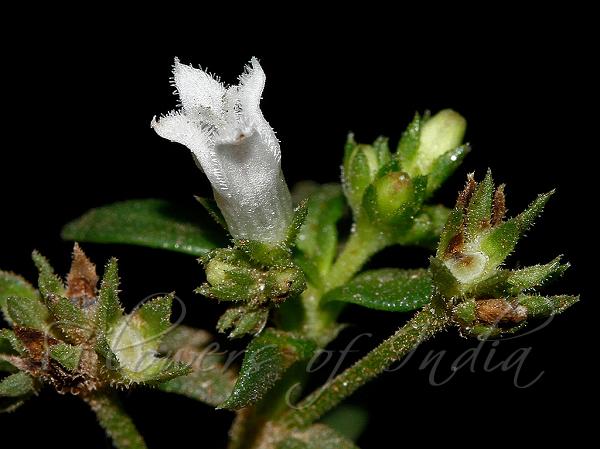|
| Chay Root |
|

|

| File size | 189867 |
| Original date | 3/5/17 9:25 AM |
| Resolution | 1024 x 768 |
| Flash | Flash fired |
| Focal length | 100.0mm |
| Exposure time | 1/250s |
| Aperture | 13.0 |
| Focus Distance | |
| Metering Mode | Multi-segment |
| Camera make | Canon |
| Camera model | Canon EOS 7D |
| Sensor type |
|
|
|
|
Photo: |
Botanical name: Oldenlandia umbellata Family: Rubiaceae (Coffee family)
Synonyms: Hedyotis indica, Hedyotis wightii, Oldenlandia wightii
Synonyms: Hedyotis indica, Hedyotis wightii, Oldenlandia wightii
Chay Root is a spreading or prostrate herb, with
root-stock woody. Leaves are stalkless, 0.5-1.6 x 0.2-0.4 cm,
linear-lanceshaped, base narrowing into wings on stalks, margin curled,
tip pointed, scabrous, 1-nerved; stipules with several bristles, base
triangular. Flowers are borne in many-flowered umbel-like cymes at
branch-ends, and also sometimes in leaf-axils. Sepals are 4,
persistent, about 1.5 mm long, ovate-tapering. Flowers are
pinkish-white, about 3 mm across, bell-shaped; petals 4, lanceshaped.
Stamens are 4, in the throat of the flower tube, protruding; filaments
linear. Ovary is about 1 mm across, spherical, hairy; stigma 2-fid,
recurved. Capsules are 2-2.5 mm across, spherical, didymous, rough.
Seeds angular, netveined. A color-fast red dye can be extracted from
the root bark of a two-year-old plant. Chay root dye was once used with
a mordant to impart a red colour to fabrics such as calico, wool, and
silk. Chay Root is found in Peninsular India and Sri Lanka.
Medicinal uses: This plant is well known in
Siddha Medicine for its styptic property. It is also a drug that can be
administered for bronchial asthma, as a decoction of the entire plant,
a decoction made from its root and liquorice in the ratio-10:4, or the
powdered root is given either with water or honey. A decoction of the
root also is a febrifuge.
This plant is well known in
Siddha Medicine for its styptic property. It is also a drug that can be
administered for bronchial asthma, as a decoction of the entire plant,
a decoction made from its root and liquorice in the ratio-10:4, or the
powdered root is given either with water or honey. A decoction of the
root also is a febrifuge.
Medicinal uses:
 This plant is well known in
Siddha Medicine for its styptic property. It is also a drug that can be
administered for bronchial asthma, as a decoction of the entire plant,
a decoction made from its root and liquorice in the ratio-10:4, or the
powdered root is given either with water or honey. A decoction of the
root also is a febrifuge.
This plant is well known in
Siddha Medicine for its styptic property. It is also a drug that can be
administered for bronchial asthma, as a decoction of the entire plant,
a decoction made from its root and liquorice in the ratio-10:4, or the
powdered root is given either with water or honey. A decoction of the
root also is a febrifuge. | Identification credit: P.S. Sivaprasad | Photographed in Coimbatore, Tamil Nadu. |
• Is this flower misidentified? If yes,